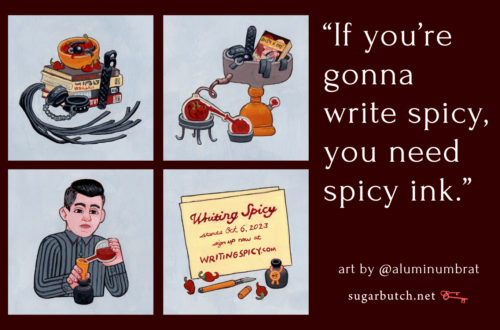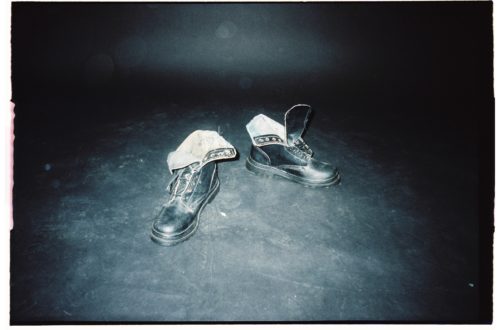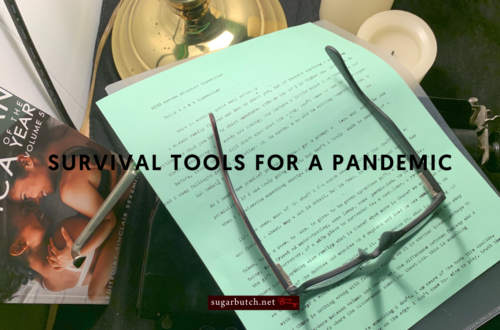This site contains explicit writings on kink practices, dominant/submissive relationships, and queer kink erotica (among other things). All characters in role play or non-consent scenes are consenting adults. Content warnings are included.
Artist Shelley Stefan sent on this video from her art show in Harlem in New York City in 2010. I missed this entirely, unfortunately, but I really like the work.
Here’s a description from Shelley, from an interview with CherryGRRL:
“The series “B is for Butch” is an offshoot from the work and research I developed in two prior visual arts projects entitled: “Lesbian Family Heraldry: An Achievement of Arms” (2005-2006) and “The Lesbian Effigies” (2006). These bodies of work, comprising of paintings, drawings, bronzes, and belt buckles, appropriate the art and science of medieval heraldry in order to engage queer subcultural commentary on topics of power, alliance, and family signification, prioritizing what Theorist J. Halberstam cites as the construction of “queer (female) genealogies.”[i] In 2004, I directed my visual arts practice and research into the world of heraldry and armour as an emotive response to real-life experiences of familial trauma, where I felt what it was like to be a person, a family “under siege.” My wife and I lost custody of our happy and healthy daughter due to several breaches of justice and a bigoted and homophobic US legal system. The experience and the loss left me and my lesbian partner feeling broken and beaten. I did what many artists do amidst strife: I turned to my visual arts practice as a method of emancipation, activism, and poetic justice in a world where, unfortunately and sometimes, bad things can happen to good people. Heraldry and this world of armour seemed like a perfect conceptual and aesthetic palette for me to think about notions of power and security from the “underdog” or subculturally liminal perspective, and how traditional visual symbologies (such as heraldry) have a way of legitimizing through the mere history of their visual currency. In these bodies of work, I problematized heraldry’s armigerous exclusivity and its heterosexist male monopoly on the meaning of family, as well as appropriated the heraldic medieval aesthetic to take part in what Third World Feminist Theorist Chela Sandoval calls a “Technology of Crossing” – a method to “identify and describe emotional, psychic, and social technologies that embody and circumscribe identities necessary for recognizing power, and changing its conditions on behalf of equalizing power between socially and psychically differing subjects.”[ii] I began using the power of heraldry and medieval armour as a method to transpose power on behalf of queer liminal subjectivity.
“Through this research process, I encountered many, many images of armour. Some armour just seemed inherently queer-looking to me – very dykey, very butchy, and quite gender-bendy, all of which to me are very good attributes. Some armour also really seemed conceptually loaded for me on topics of security/insecurity and subcultural interiority. I began to think about the dual signification of the term “armour” – like, how armour signifies at once a sense of security and a sense of insecurity – a toughness and a vulnerability. To wear armour is to acknowledge in some way that you are vulnerable, but also and simultaneously that you aim to and claim to feel non-vulnerable, or protected. I started really thinking about subcultural interiority, what’s underneath the rock that’s underneath the rock. Near 2008, I began to imagine how different liminal subjectivities and minorities might relate to this notion of armour and how I might be able to manipulate these visualizations to open up conceptual doors. Butch subjectivity came to the forefront, partially because I live as a butch lesbian and my art is strongly tied to self-portraiture, but also because I like to do research in queer subcultural theory and this was a topic I was interested in investigating. So, I was inspired to create this collection of works entitled “B is for Butch.””
Here’s one example of a pieces from “B is for Butch:”




